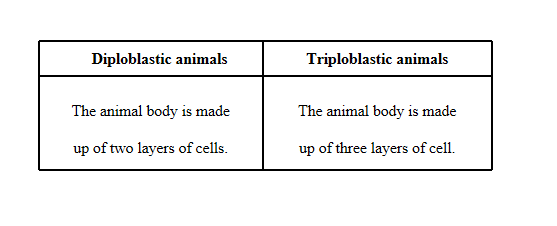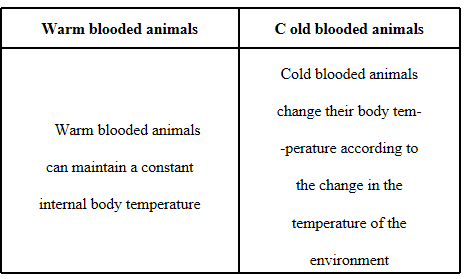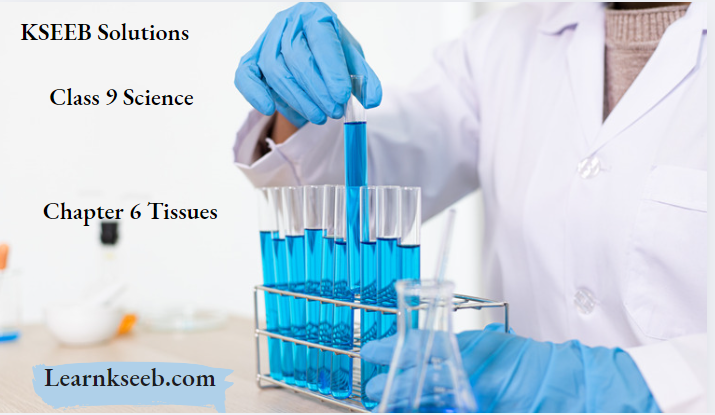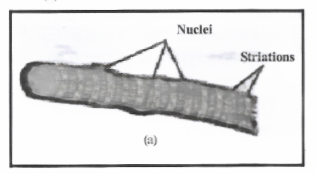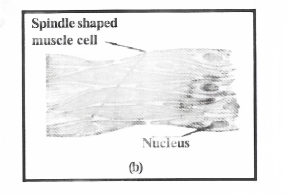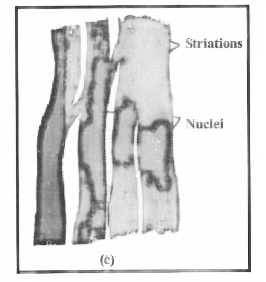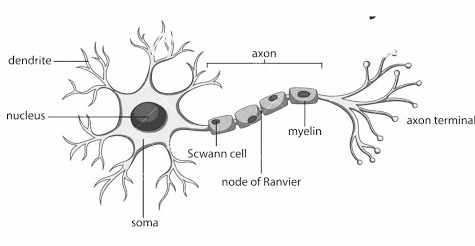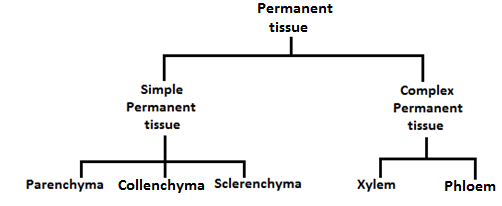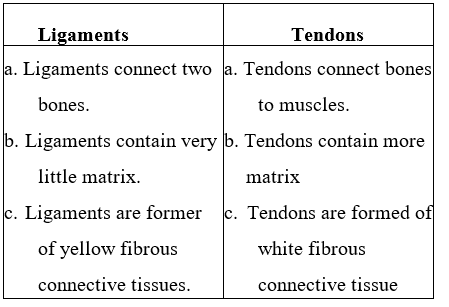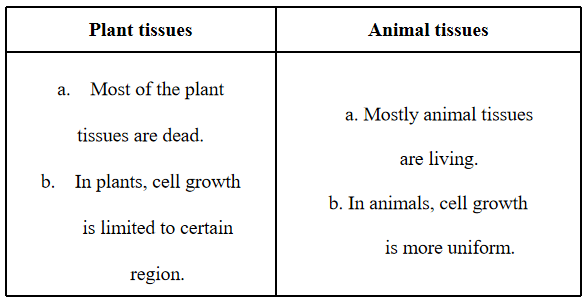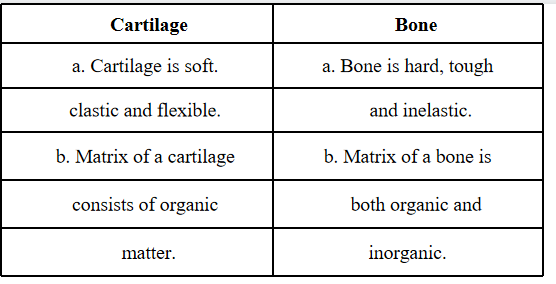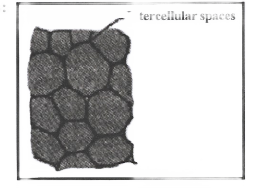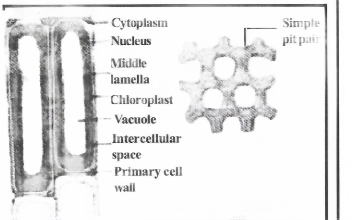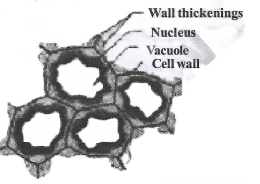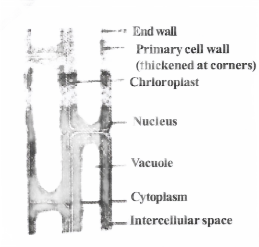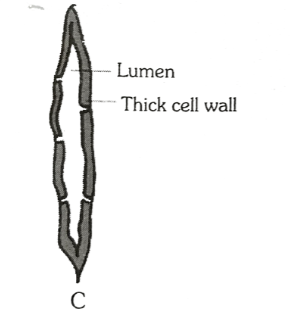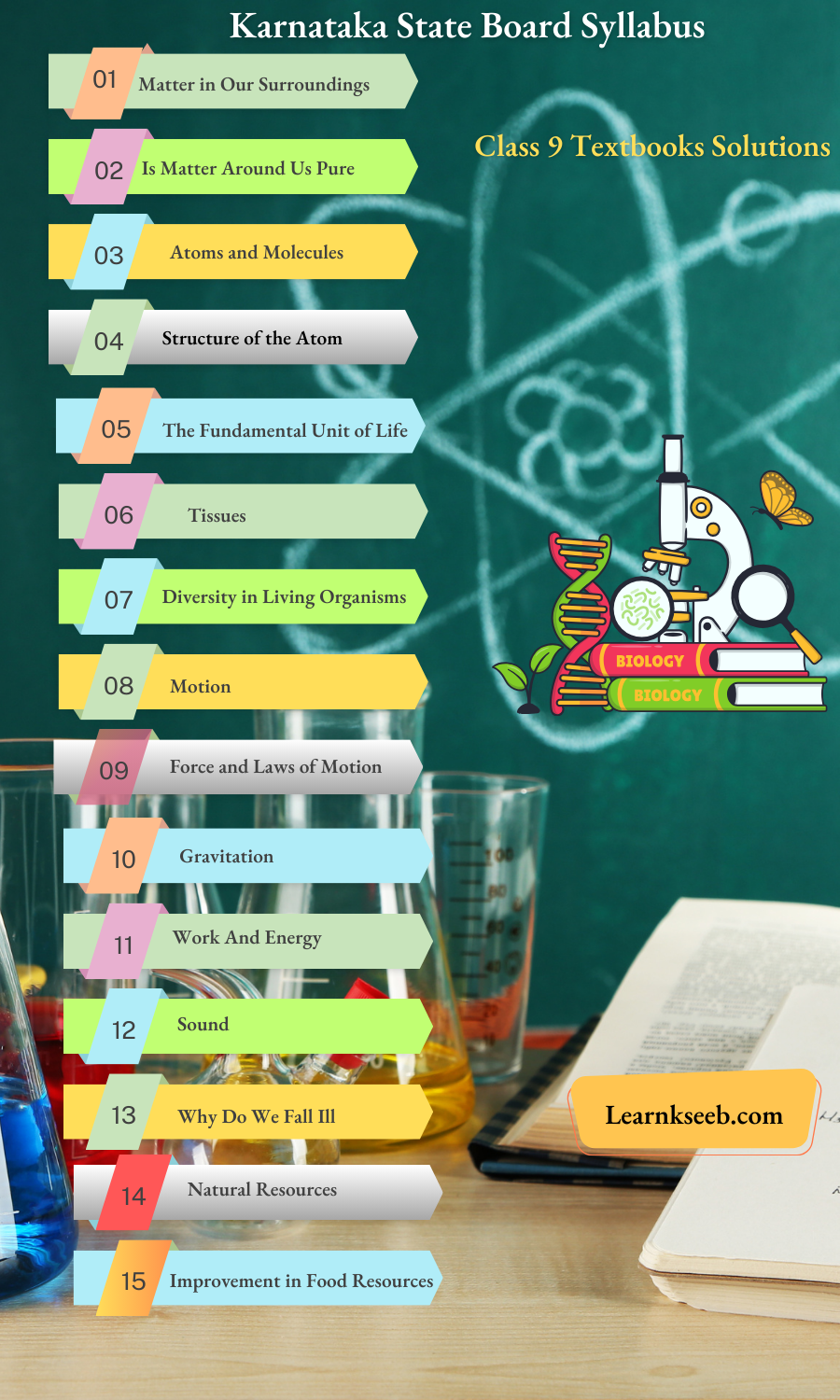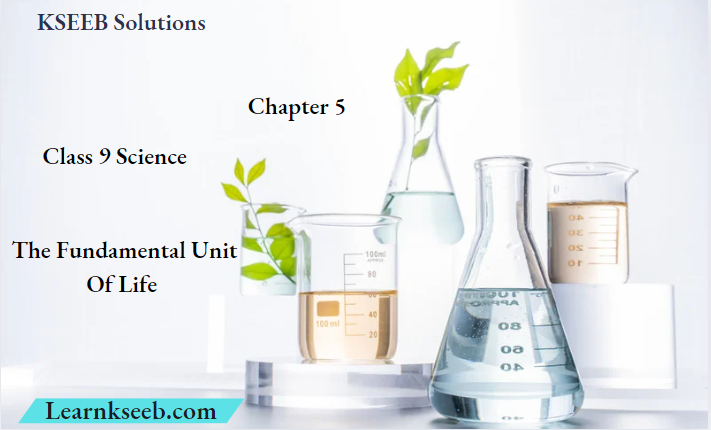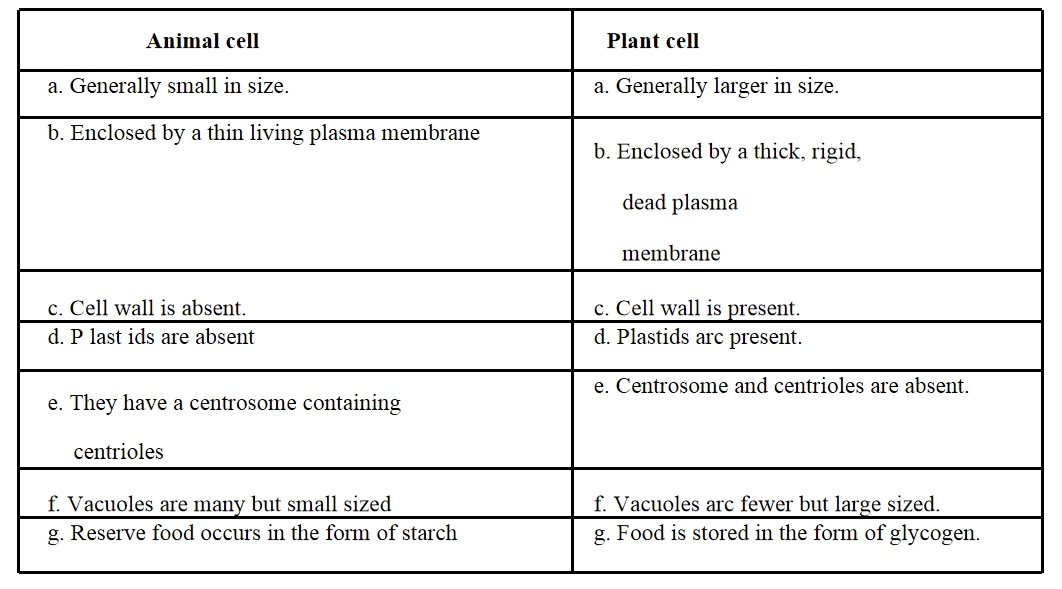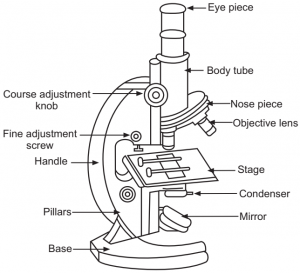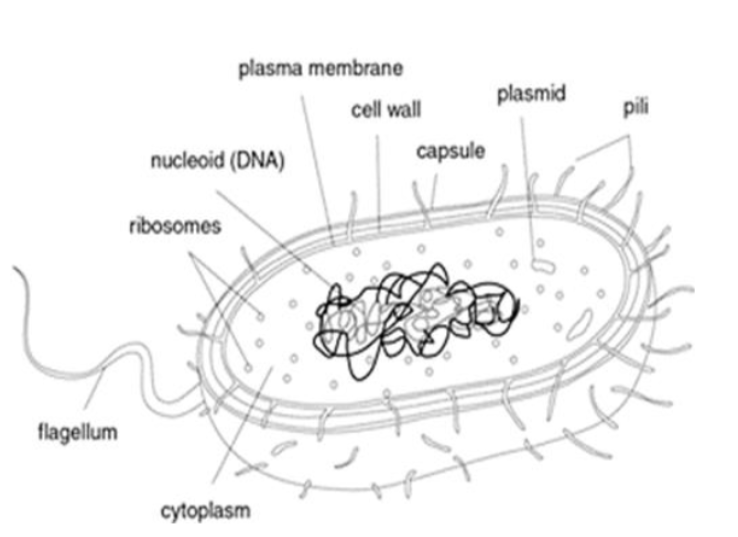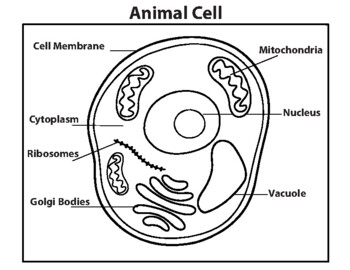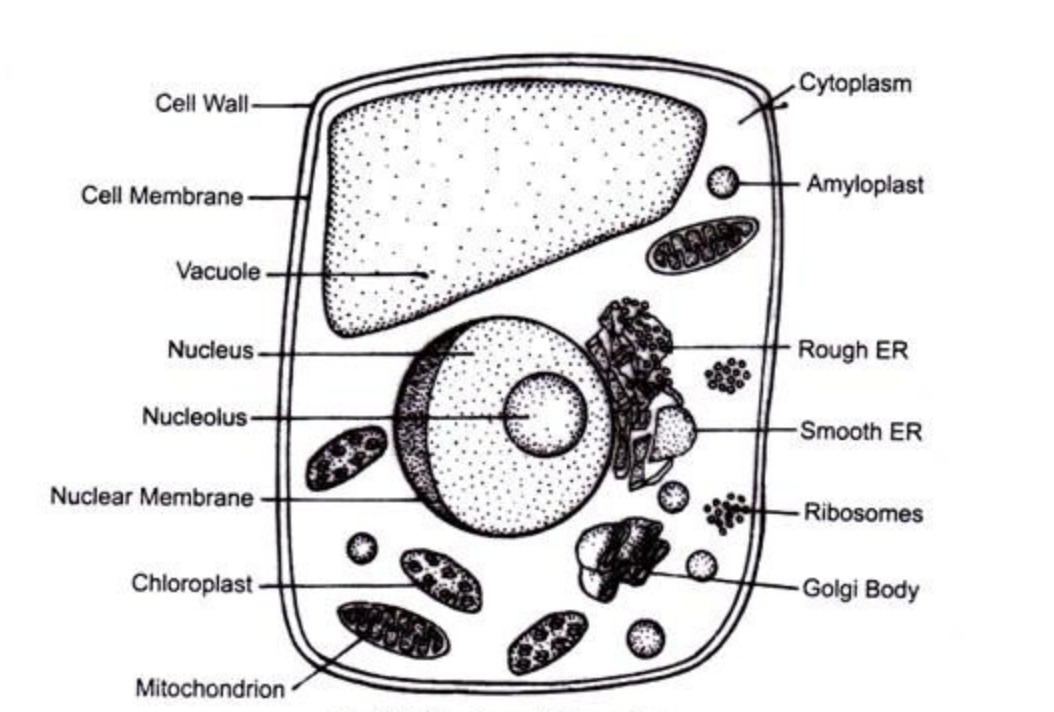KSEEB Class 9 Biology Chapter 4 Notes Why Do We Fall ill Learning Objectives
After completing this chapter, you will be able to:
- define health and differentiate between health and disease;
- identify various personal and community issues related to health;
- categorize diseases on the basis of their spread from one person to another;
- describe various causes and means of spread of infectious diseases;
- describe various organ-specific and tissue-specific manifestations of diseases;
- explain the principles of treatment and prevention of diseases;
- differentiate between Immunization and vaccination.
Understing health and diseases is a very complex issue. They have many interconnected causes. In the first chapter of this book, you have studied about cells. The cells are the basic structural and functional units of living beings. They are made up of many complex proteins, carbohydrates, fats or lipids, etc.
Since the living cell is dynamic in nature, some activities are always going on inside the cell. Even when a cell does not move, it undergoes repair. New cells are also manufactured continuously from pre-existing cells.
There are many specialized activities which go on all the time in different parts of our body. For example, our heart goes on beating, we keep breathing with the help of lungs, and kidneys filter urine continuously. All these activities are interconnected. For example, if our heart stops beating even for a while, the blood circulation will stop.
Thus, the various parts of our body will not get nutrients and oxygen. This will adversely affect our body. Likewise, if our kidneys stop filtering urine, the waste products and various poisonous substances like urea will accumulate in our body. This will affect our immune system and physiology. Consequently, our body will not be able to function properly.
All the activities listed previously or which are occurring in our body need raw materials and energy which are supplied in the form of nutrients in our food that we get from outside the body. Thus, food is necessary for proper functioning of cells and tissues. In this chapter, we shall learn about health and diseases.

Health And Its Failure
What is the significance of health?
Meaning of health differs for person to person. You may say that you are very healthy because you can run 100 metres in 15 seconds. For your grandmother, good health means being able to go to market or do personal work normally and efficiently. For a sportsperson, being healthy means performing well in the sports field. Thus, we can say that health is a state of being well enough to function properly, physically, mentally and socially.
According to modern concept, health means a sound mind and a disease-free body living in a good environment. World Health Organization (WHO) has defined health as: Health is a state of complete physical, mental and social well-being and not merely an absence of disease or infirmity.
- Physical health: It is the normal state of structure and proper functioning of the body parts. It can be assessed by different tests.
- Mental health: It is a state of normal mental satisfaction, which is achieved when the individual maintains a balance with her/his environment. A mentally sound individual can contribute to his or her society or community in a better way. Mental health cannot be measured.
- Social health: It is the happiness of an individual at home, workplace and society. It is the social well- being of an individual. It cannot be measured.
Personal and community issues affecting health
Going by the definition stated above, health is a state of physical, mental and social well-being. All these issues are interrelated and cannot be achieved by one entirely on one’s own. Thus, we can say that,
- Our immediate environment and society in which we live play a crucial role in deciding our health. An imbalance in our physical environment like natural calamity such as cyclone or drought or earthquake creates risk to health.
- Our social environment is an important factor in deciding our individual health.
- Public cleanliness is important for good health. Dirty and unhygienic surrounding due to improper garbage disposal, stagnation of water in drains, breeding of mosquitoes, flies, etc. will lead to poor health. Good economic conditions and availability of jobs to help in buying food and medicines and other articles is also necessary for healthy living.
- Social equality and harmony are necessary for individual health. This is because in order to be truly healthy, we need to be happy.
KSEEB Class 9 Biology Important Questions Chapter 4
Activity 1
- Contact your Panchayat or local authority concerned with the supply of clean drinking water.
- Find out from them what provisions are made by these authorities to provide clean drinking water in your locality.
- Also find out whether all people living in your locality are getting clean drinking water.
Activity 2
- Contact your Panchayat or local authority concerned with managing solid waste generated in your neighbourhood. Find out how they are managing waste.
- Do you feel all these measures adopted by them for disposal of solid waste are safe and adequate?
- What can you and your family do to reduce the solid waste generated during each day or week?
should maintain a harmonious relationship with each other and treat everybody equally.
The Five F’s
The pathogens in faeces pass from one person to another via the faecal-oral route of transmission. The major causes of faecal-oral disease transmission are lack of adequate sanitation and poor hygiene practices. These causes are summarized and known as the five F’s. The five F’s include – fingers, flies, fluids, fields and floods. Diseases caused by faecal-oral transmission are cholera, diarrhoea, typhoid, hepatitis and polio.
Distinction Between Being “Healthy” And “Disease Free”
In the previous section, we discussed about the word “health. But what do we mean by the term ‘disease’? Does being free from disease mean being healthy? The term disease has come from two words -des meaning away and aise meaning ease. Thus, the term disease literally means away from ease or uncomfortable. Disease may be defined in many ways, such as:
- Any physical or functional change from the normal state that causes discomfort or disability or impairs the health of a person may be called a disease; or
- Disorder in the physical, physiological or social state of a person caused either due to nutritional deficiency, hormonal change, pathogen or any other reason is called a disease.
Not suffering from a disease does not mean being healthy. One can be in poor health without suffering from any identifiable disease. On the other hand, when we think of disease, we think of individual suffering due to a particular discomfort.
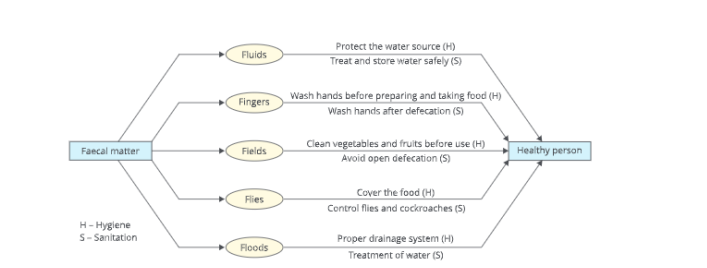
The differences between being healthy and disease- free are given in Table 4.1.
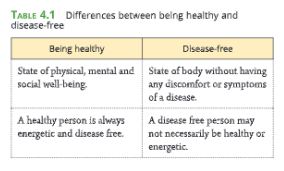 Disease And Its Cause
Disease And Its Cause
What is a disease?
You have studied about health and diseases in the earlier sections. Now you know that any physical or functional change from the normal state that causes discomfort, disability or impairs the health of a person is a disease.
What are symptoms or signs of a disease?
How do we know that we are suffering from a disease? How do we know that there is something wrong with our body? We can know about the disease from its symptoms. Any inappropriate behaviour of an organ or any external sign of problems in the body is known as symptom of that disease. You have studied that our body has many tissues. Similar tissues are grouped together to form organs and organ systems. Each organ system has specific organ for a specific function.
For example, our circulatory system consists of heart, veins and arteries. Heart is necessary for pumping blood that is transported to and from our body organs through arteries and veins. Similarly, our digestive system consists of stomach, intestine and digestive glands. The stomach helps to digest food by mixing digestive enzymes and bile juices while absorption of nutrients takes place in the intestine.
Similarly, our body has musculoskeletal (muscular and skeletal) system which is made up of muscles and bones. This system holds the body parts together and helps in the body movements.
However, in case of a disease, usually functioning or sometimes appearance of one or more systems of the body changes for worse. These changes in the functioning or appearance of organ systems will show symptoms and the signs of the disease.
Symptoms may include headache, cough, loose- motions, etc. The symptoms indicate that there is something wrong with the body but they do not indicate what disease it may be. For example, a headache may be due to stress, or lack of sleep or worse, meningitis. On the basis of symptoms, signs of diseases can be found out by physicians. The signs of disease give some more indication of a particular disease.
On the basis of the signs, laboratory tests can be conducted to diagnose the exact disease. For example, in case of persistent high fever, blood test can be conducted or in case of persistent pain in leg, X-ray and vitamin D/calcium tests can be conducted.
KSEEB SSLC Chapter 4 Notes Detailed Explanation
Acute And Chronic Diseases
There are some diseases such as fever, which last for a very short time. On the other hand, there are some diseases such as arthritis, blood pressure that last for a long time. Thus, time duration determines how we perceive the disease. On the basis of duration of occurrence, the diseases can be classified into two types – acute and chronic.
Activity 3
Survey your locality and find out about acute and chronic diseases in your area. Answer the following

- Are the responses to questions 1 and 2 different?
- Are the responses to questions 2 and 3 different?
- What is the reason for these differences? What effect will it have on the general health of the population in your area?
Acute diseases
The diseases which last for very short periods of time are called acute diseases. The symptoms of these diseases are visible very quickly in the body. For example, common cold, dysentery, typhoid and cholera.
Chronic diseases
The diseases that last for a long time, even as much as a lifetime, are called chronic diseases. The symptoms of the disease get visible after a period of time. For example, tuberculosis, elephantiasis, diabetes, arthritis and blood pressure.
Chronic diseases and poor health
Acute and chronic diseases have different effects on our health. We know that proper functioning of all the body parts is necessary for general good health. Therefore, any disease which causes poor functioning of organ system would affect our general health also. However, since acute diseases last for very short period of time, they will not have enough time to cause major effects on general health. On the other hand, a chronic disease will have major effects on general health since it lasts for a long period of time.
For example, we often suffer from cough and cold or headache. However, we get well soon within a week or so and it does not affect our health. On the other hand, if we suffer from a chronic disease like tuberculosis, then our lungs get affected. Soon, we lose weight, become short of breath and feel tired regularly. Since chronic diseases result into a prolonged poor general health, they have very drastic long term effects on person’s health as compared to acute diseases.
Causes Of Diseases
All diseases have some causes. These causes may be immediate causes (which directly affect the sufferer) or contributory causes (which indirectly contribute to the disease). Most diseases have many causes rather than only one cause.
There are many levels of causes of a disease, such as:
Level one – Immediate or primary causes
- Infection by microorganisms: Some diseases are caused due to infection by microorganisms such as bacteria, virus, fungi and protozoa. For example, loose motions are caused by virus. Thus, infection by virus becomes immediate cause of loose motion.
Level two – Contributory or secondary causes
- Unclean environment: The microorganisms grow well in an unclean environment. Unclean environment includes polluted air, polluted drinking water, etc.
- Deficiency of nutrients in diet: Proper nutrition is very essential for good health. A person with lack of nutrient in his or her diet is more prone to diseases. For example, diseases like marasmus, anaemia and goitre are caused due to the lack of proper nutrition.
- Genetic factors: Sometimes, genetic differences also cause diseases. Due to genetic disorders, body’s immunity to fight diseases is reduced. As a result, the person becomes prone to diseases. In addition, genetic defects cause some abnormalities in a person leading to physiological and morphological malformations in the body.
The contributory causes cannot operate in isolation.
They need immediate cause for a disease to be caused.
Level three-Lack of public services or tertiary causes
These causes include those caused due to lack of public services. Had there been good economic conditions of a person, there would not have been deficiency of nutrients in diet. Similarly, if proper public services were available, the environment would have been clean and diseases would not have been caused.
Types Of Diseases
Based on the time of their occurrence – whether from birth or after birth, diseases are broadly grouped into two categories:
- Congenital diseases
- Acquired diseases
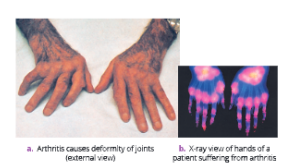
Congenital diseases
Those diseases that are present since birth are called congenital diseases. Such diseases are caused due to a genetic abnormality or malfunctioning of any organ or organ system. These diseases may be passed on from one generation to another.
Why Do We Fall Ill Class 9 KSEEB Question Answers
Acquired diseases
Those diseases that develop after birth are called acquired diseases. These can be broadly classified into two types:
- Communicable or infectious diseases
- Non-communicable or non-infectious diseases
Communicable (infectious) diseases
These diseases spread from an unhealthy or infected person to a healthy person. They are caused by microorganisms (pathogens) such as viruses, bacteria, fungi, protozoa or helminths (worms). The causative organism of the disease can spread from one person to another through contact, water, air, food, etc. For example, malaria and dengue.
Non-communicable (non-infectious) diseases
These diseases do not spread from an infected person to a healthy person. They are caused due to some specific factors such as malfunctioning of some vital organs and deficiency of nutrients. For example, diabetes, arthritis, heart diseases and cancer.
Non-communicable diseases can be further divided into:
Degenerative diseases
These diseases are caused due to malfunctioning of important body organs. For example, osteoporosis, kidney failure, myopia and arthritis.

Deficiency diseases
These diseases are caused by the deficiency of nutrients in our diet like proteins, minerals, vitamins, etc. For example, marasmus, kwashiorkor, anaemia, goitre, beriberi and pellagra.
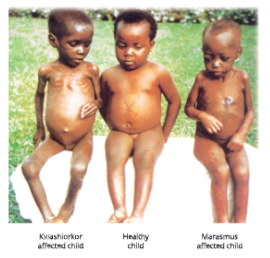
Allergies
Allergy is caused due to the hypersensitivity (over sensitivity) of the body to foreign substances like pollen grains, dust, silk, nylon, egg, fish and certain drugs. The substances due to which allergy is caused are called allergens. For example, asthma, bronchitis and skin allergy.
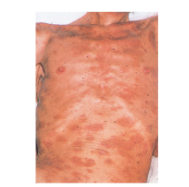
Infectious and non-infectious causes of a disease
In the earlier section, you have studied about the infectious and non-infectious diseases. There are two types of diseases based on the immediate causes of diseases. Diseases where immediate causes are external like, microorganisms, are called infectious diseases. This is because the microorganisms or causative organisms of the disease can spread from one person to another in a community through contact, water, air, etc. For example, malaria and dengue are infectious diseases.
On the other hand, there are diseases which do not spread from an infected person to a healthy person through microorganisms. These diseases can be caused due to some specific factors such as malfunctioning of some vital organs, deficiency of nutrients, genetic abnormality, etc. These diseases are caused due to mostly internal, non-infectious causes. For example, high blood pressure, diabetes, arthritis, heart diseases and cancer are non-infectious diseases.
Infectious Diseases
Infectious agents Infectious diseases are caused by a variety of microorganisms such as virus, bacteria, fungi and protozoans. Some multicellular organisms like worms also cause diseasee
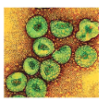
Class 9 Biology Chapter 4 Disease Types And Prevention
Diseases caused by viruses:
Common cold, influenza, dengue fever, severe acute respiratory syndrome (SARS), mumps, poliomyelitis, coronavirus disease (COVID-19), chicken pox, small pox, Hepatitis B, swine flu and acquired immuno deficiency syndrome (AIDS) are some diseases caused by viral infections.
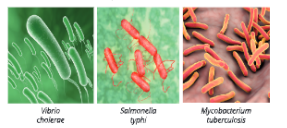
- Diseases caused by bacteria: Typhoid fever, cholera, tuberculosis, acne, syphilis, tetanus, whooping cough, botulism, gonorrhoea and anthrax are some diseases caused by bacterial infections.
- Diseases caused by fungi: Fungi cause many skin infections in humans. Some other diseases caused by fungi include, ringworm, Athlete’s foot, thrush disease, etc.
- Diseases caused by protozoans: Malaria, amoebiasis, sleeping sickness and kala-azar are some diseases caused by protozoans in humans. Malaria spreads by female Anopheles mosquito.
- Diseases caused by worms: The common example is intestinal infections, ascariasis, caused by Ascaris in humans. In addition, filariasis and elephantiasis are also caused by some worms.
Proper knowledge of the category of microorganism causing a disease is necessary for the prevention and treatment of that disease.


Members of each groups of viruses, bacteria and other pathogen have many biological characteristics in common.
- All viruses live inside the host cells whereas bacteria very rarely live inside cells. They rather live freely in environment
- Taxonomically, all members of group bacteria are very closely related to each other than to viruses. Thus, many life processes are similar in the members belonging to group bacteria, but not shared with members belonging to group viruses.
- All viruses, bacteria and fungi multiply very fast while worms multiply very slowly.
Thus, based on differences in the characteristics amongst the members of different groups and similarities amongst the members of same group, we can design the control measures against them. For example, a drug which blocks life processes in one member of a group will be generally effective against the other members of the same group. However, it will not be effective against the members of other group.
Let us take an example to understand this. We all know that antibiotics are drugs that commonly block biochemical pathways in bacteria. Many bacteria make a cell wall around themselves for protection. Penicillin is an antibiotic that blocks the biochemical pathways by which bacteria build a cell wall around them. As a result, the bacteria die. Since human cells do not have a cell wall around them, therefore, penicillin will only affect bacteria and not human cells.
As a result, penicillin will work against the species of bacteria that build cell wall around them. However, since viruses do not use such pathways and have no cell walls, antibiotics do not work against viruses causing viral infections. Therefore, in case of common cold, taking antibiotic will not help. However, if common cold is accompanied by bacterial infection, then antibiotics will help but only against bacterial infection and not viral infection.
Mode Of Spread Of Infectious Diseases
Infectious (communicable) diseases spread from an infected person to a healthy person in two ways – direct transmission and indirect transmission.
Direct transmission
The pathogens of certain diseases react and infect a healthy person directly without an intermediate agent. It can take place by various means. Direct contact between the infected person and the healthy person:
- Direct contact with the discharge from lesions or sores on the skin may cause infection. Diseases like smallpox, chicken- pox, syphilis and gonorrhoea spread through direct contact. Sexual act is one such direct contact through which syphilis and AIDS are transmitted. You will learn more about AIDS later in this chapter.
- Droplet infection: Droplets are airborne. The infected person throws out tiny droplets of mucus by coughing, sneezing, spitting or even talking. These droplets may contain pathogens. By inhaling the air containing the droplets, a healthy person may get the infection. Diseases like common cold, pneumonia, influenza, measles, mumps and tuberculosis spread by droplet infection. Since the larger droplets take a few seconds to a few minutes to reach a nearby person, we should cover our mouth while sneezing or coughing.
- Contact with soil contaminated with disease- causing viruses, bacteria, etc. The bacteria responsible for tetanus, Clostridium tetani, enters the human body from the soil.
- Animal bite: Viruses of rabies are introduced through the wound caused by the bite of rabid animals, especially dogs. The virus is present in the saliva of the rabid animal.
- Through placental transmission which may pass from the mother’s body to the foetus through placenta. For example, virus of German measles and AIDS virus.
KSEEB SSLC Why Do We Fall Ill Short Notes Class 9
Indirect transmission
The pathogens of certain diseases reach human body through some intermediate agents. It can take place by various means, which are as follows:
By vectors:
Houseflies, mosquitoes and cockroaches which take up the pathogen from the reservoir of infection pass it to healthy persons. These are the intermediaries and are called as vectors. For example, houseflies carry the causative organisms of cholera, typhoid,
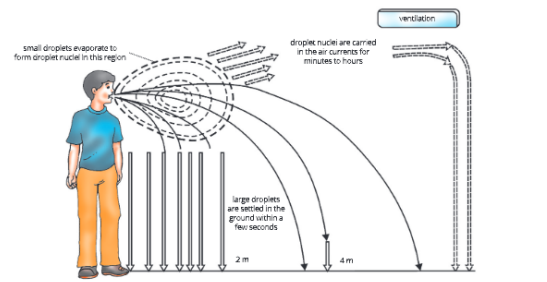

dysentery and tuberculosis on their legs and mouthparts from the faeces and sputum to food and drinks, and contaminate them. When this contaminated food is taken by a healthy person, he/she gets the infection. The commonest vector is the mosquito. Females of many species of mosquito require blood containing highly nutritious food in order to lay mature eggs. Mosquitoes feed on warm-blooded animals including humans and in turn transmit diseases from one person to another.
- Airborne: The pathogens may reach the humans with air and dust. The epidemic typhus spreads by inhalation of dried faeces of infected lice. For example, tuberculosis, influenza, common cold and pneumonia.
- Waterborne: Diseases also spread through water contaminated with microbes. For example, contaminated water may contain excreta from someone suffering from infectious gut disease, such as cholera. When this water mixes with the water used for drinking, the cholera causing microbes will enter the new hosts and cause diseases in them. Cholera, Hepatitis B and diarrhoea spread through such mode.
- Object-borne or Fomite-borne: Many diseases are transmitted through the use of contaminated articles, such as handkerchiefs, towels, utensils and toys.
- Dirty hands and fingers are also the sources of infection for various digestive and respiratory diseases
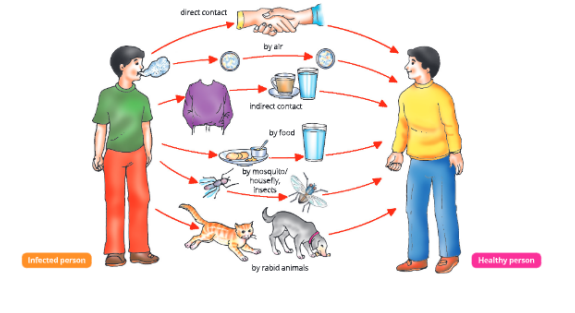
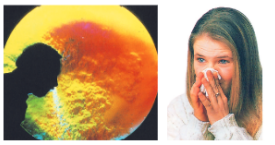
Aids-a Disease Caused By Direct Contact
AIDS (Acquired Immuno Deficiency Syndrome) is a viral disease caused by HIV (Human Immunodeficiency Virus). HIV attacks the white blood corpuscles (WBCs) of blood and reduces the immunity power of the person. Such a person is prone to various diseases. As the natural defense mechanism of the person is destroyed by the AIDS virus, the patient dies from other infections or diseases.
How does AIDS spread?
AIDS spreads through:
- Sexual contact with an infected person.
- Transfusion of blood infected with HIV.
- Use of HIV infected needle for injections.
- HIV infected mother to foetus (then to newly born infants).

Prevention of AIDS
- People should be educated about AIDS.
- Only disposable needles and syringes should be used.
- Routine screening should be done of blood donors and organ donors.
- Blood must be screened for HIV.
AIDS does not spread through casual contact, such as handshake or hugs, or sports, like wrestling, or by any other means in which we touch each other socially.
Organ-Specidic And Tissue-Specific Manifestations
In the previous section, you have studied about various means of transmission of microorganisms. Different species of microbes have evolved to live in different parts of the body. These microorganisms enter the body through different portals. But where do they go inside the body?
Portal specificity
If microbes from air enter the body through nose, they are likely to go to lungs. For example, bacteria causing tuberculosis and pneumonia enter body through nose via air and enter lungs.
If microbes from water or contaminated food enter the body through mouth, they are likely to settle and stay in the gut lining or in the liver. For example, bacteria causing typhoid, dysentery or diarrhoea stay in the parts of gut lining while virus causing jaundice reach liver from digestive tract.
Why Do We Fall Ill Chapter Summary Class 9
Nonportal specificity
In this, the pathogen may enter through an organ but does not settle there. Instead, it may travel to any other part and settle there. For example, HIV causing AIDS enters the body mostly through sexual contact, but spreads to lymph nodes all over the body. Malaria-causing microbe, Plasmodium, enters the body through mosquito bite on skin, but it reaches liver, and then after multiplying, it goes to red blood cells.
Virus causing brain fever or Japanese Encephalitis enters through mosquito bite but goes on to infect the brain.
Tissue specific signs and symptoms
The signs and symptoms of a disease depend on the tissue or organ which is targeted by the disease causing microbe. For example, if it targets the lungs, then, pain in chest, cough and breathlessness results. If the liver is the target organ, then jaundice results. If brain is the target then headache, vomiting, fits, giddiness or unconsciousness is seen. Thus, on the basis of knowledge of target tissue or organ, the signs and symptoms of infection can be known.
Also note that in addition to tissue-specific effects as stated above, there will be common effects also. These common effects on the body will depend upon how active is body’s immune system. In case of a very good and very active immune system, many cells (or antibodies) will be produced in the body at the targeted organ to fight off the infection and protect the body. As a result, there may be inflammation or swelling around affected area and pain locally along with general effects like fever or uneasiness.
In case of infection by HIV causing AIDS, the body’s immune system is affected. Many of the symptoms of the HIV are due to body’s immune system getting weakened. For example, cold can become pneumonia, or minor gut infection can produce major diarrhoea. It is because of subsequent infections that people suffering from AIDS die.
The severity of disease depends on the number of microbes or pathogens present in the body causing that disease.
If the number of pathogens infesting the body is very small, they will be overpowered by the body’s immune response and the effect of disease will be very less. However, if the number of microbes infesting the body is very large, the disease can be severe, sometimes threatening the life. Thus, the immune response elicited by body’s immunity is a major factor which determines the number of microbes surviving in the body and severity of the resultant disease.
Principles Of Treatment
There are two principles or methods of treatment for an infectious disease –
- by reducing the effects of the disease, and
- by killing the cause of the disease.
By reducing the effects of the disease
For this, the treatment is provided to reduce the symptoms. The symptoms are usually because of inflammation. Thus, medicines can be given to patient to bring down fever, reduce pain or loose motions. Bed rest is also advised to conserve the energy required for healing. However, the treatment of symptoms does not make the microbe ineffective. It can only provide temporary relief from symptoms without curing the disease. For this, it is necessary to kill the microbe.
By killing the cause of the disease
Microbes can be killed by taking medicines which affect the biochemical processes of a particular group of microbes such as virus, bacteria, fungi, protozoa, etc. Usually antibiotics are the medicines that are administered in the first phase to block the biochemical pathways.
Principles Of Prevention
In the previous section, you have studied about the principles of treatment to get rid of infection if someone gets a disease. However, there are three limitations of this approach.
- First: If someone falls sick, her/his body functions are damaged which may not recover completely.
- Second: Treatment will take time, which will keep the person bedridden for some time even if she/he gets proper treatment.
- Third: the person suffering from disease can seve as a source of further infection and spread disease to others.
Therefore, prevention of a disease is better than cure. There are two ways of prevention of a disease – general and specific.
General way of preventing infectious diseases
Preventing exposure to infectious microbes
- Preventing exposure to infectious microbes which are not overcrowded.
- For waterborne microbes, we can prevent exposure by providing clean and safe drinking water. Water can be treated to kill microbial contamination by boiling or other means.
- For vector-borne infections, we can provide clean environment so that these disease carrying vectors do not flourish there. Thus, public hygiene is a basic key to prevention of infectious diseases.
Providing proper and sufficient food
- The immune system of our body goes on fighting the disease causing microbes.
- Each time a microbe enters our body, our immune cells get into action and manage to kill off the infection before it assumes a major proportion and takes the shape of a disease.
- Functioning of immune system is dependent upon the type of nourishment we receive. Our immunity will become weak if we do not get proper nourishment and food. Thus, providing proper and sufficient food is very necessary for prevention of a disease.
Activity-4
- Select ten families who are well off and ten families who are poor from your locality and conduct a survey.
- Take children below five years of age from these families and measure the heights of these children.
- Draw a graph of the height of each child against her/his age for both sets of families and compare.
- What difference do you find between the heights of these groups?
Specific way of preventing infectious disease
You would have seen that sometimes if a person gets a type of disease, she/he does not get it again. This is related to body’s immunity. Nowadays, occurrence of smallpox is rare, but about a hundred years ago, it was very common. However, if someone had smallpox earlier and survived, he/she had no chance of getting smallpox again. Thus, having disease once prevented subsequent attacks of the same disease. This was the basis of immunity and immunization.
Immunity is the body’s ability to fight off foreign substances, viruses or bacteria by producing antibodies or cells that can kill or neutralize these foreign substances or cells.
Thus, with the help of the immune system, body is able to distinguish between its own substances and foreign substances. When the body recognizes foreign substances (pathogens), it makes special antibodies or cells that attack the pathogens and kill them. When these antibodies and special cells are produced, it is called the immune response.
KSEEB Class 9 Biology Important Questions Chapter 4
Immunization
Immunization is the process of developing immunity or resistance against a particular pathogen.
Basis of principle of immunization
- If a pathogen (infectious microbe) enters the body, the immune system will recognize it and respond against it.
- It also remembers each foreign substance and pathogen that enters the body specifically.
- For each type of pathogen, the immune system produces cells that are specific for that particular pathogen. These cells attack the pathogen entering the body.
- Next time if the same pathogen or its close species enters the body, the immune system recognizes it and responds with greater vigour.
- Thereby, it eliminates the second or subsequent infection even more quickly than the first time.
- This cycle goes on each time the pathogen enters the body.
Vaccination
Vaccination is a term coined by Edward Jenner. It is the process of administering vaccine into the body for developing resistance against a particular disease. A vaccine is a biological preparation of dead or weakened microbe that improves immunity to a particular disease.

A vaccination against a particular disease (such as measles and typhoid) will protect against that particular disease only. Vaccine can be introduced in the body of a person mostly by injection and sometimes orally. When vaccine enters the body, it stimulates white blood cells (WBCs) in the body to produce antibodies against the disease-causing germs.
There are many vaccines available for preventing various infectious diseases and for providing a disease specific method of prevention. Table 4.4 gives the important vaccines used to prevent diseases in infants and children. A vaccine may wear off (lose its strength) over time. Therefore, booster dose of that vaccine is required to increase antibodies against that disease again.
Some hepatitis viruses are transmitted through water. These cause jaundice. A vaccine is available against hepatitis A in the market. However, since this virus is present in water, children in most parts of our country are exposed to this virus. They become immune to hepatitis A virus by the age of five years.
Under these circumstances, there is no need to administer hepatitis A vaccine to these children. The first vaccine used against cholera was developed in the late 1800. In 1990, oral vaccines against cholera were first introduced. Dukoral is the trade name of cholera vaccine widely used nowadays.
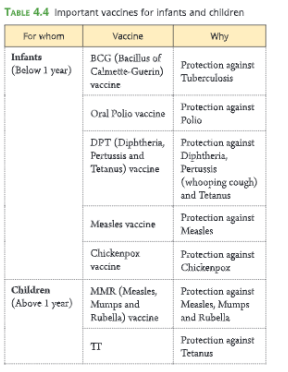
Summary
- Health is a state of complete physical, mental and social well-being and not merely an absence of disease or infirmity.
- A disease is any physical or functional change from the normal state, which causes discomfort, disability or impairs the health of a person.
- Diseases may be classified as infectious and non-infectious depending upon their causes, or as acute and chronic depending upon their duration.
- Diseases that spread from an infected person to a healthy person are known as infectious diseases.
- Diseases that do not spread from an infected person to a healthy person are known as non-infectious diseases.
- Diseases that last for a very short periods of time are called acute diseases.
- Diseases that last for a long time, even as much as lifetime, are called chronic diseases.
- All diseases have some causes. These causes may be immediate causes (which directly affect the sufferer) or contributory causes (which indirectly contribute to the disease). Most diseases have many causes rather than only one cause.
- Proper knowledge of the category of microorganism causing a disease is necessary for prevention and treatment of a disease.
- Infectious agents may spread through air, water, physical contact or vectors.
- There are two ways of prevention of a disease – general and specific. General way of prevention of a disease includes preventing exposure to infectious microbes and providing proper and sufficient food. Specific way of prevention of a disease includes immunization.
- Immunization is the process of developing immunity or resistance against a particular pathogen.
- A vaccine is a biological preparation of dead or weakened microbe that improves immunity to a particular disease.
Key Terms
- Health: A state of complete physical, mental and social well-being and not merely an absence of disease or infirmity
- Disease: Any physical or functional change from the normal state that causes discomfort, disability or impairs the health of a person
- Symptom: Any Inappropriate behaviour of an organ or any external sign of problems in the body
- Congenital diseases: Diseases that are present since birth+ Acquired diseases: Diseases that develop after birth
- Communicable diseases: The diseases that spread from an unhealthy or infected person to a healthy person
- Non-communicable diseases: The diseases that do not spread from an infected person to a healthy person
- Degenerative diseases: The diseases that are caused due to malfunctioning of important body organs
- Deficiency diseases: The diseases that are caused due to the deficiency of nutrients in our diet
- Immunity: The body’s ability to fight off foreign substances by producing antibodies
- Vaccination: The process of administering vaccine into the body for developing resistance against a particular disease.

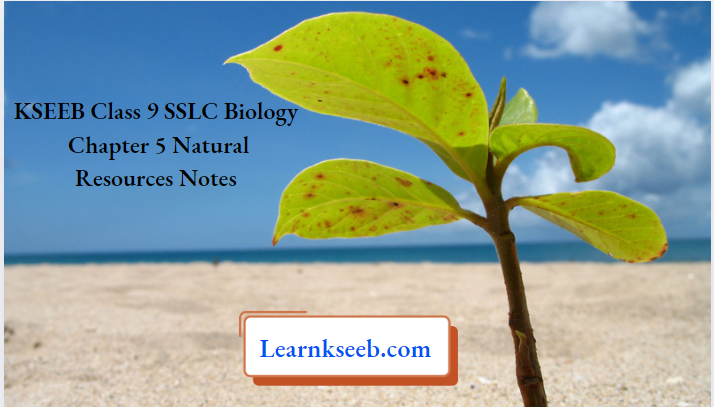
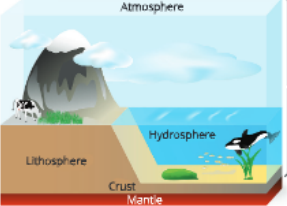
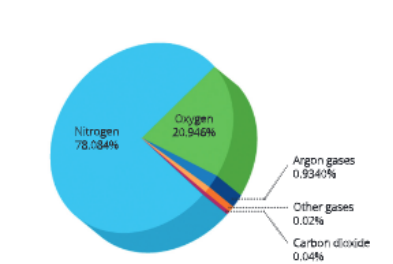

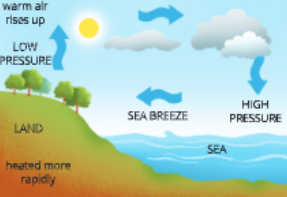
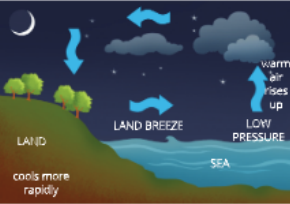
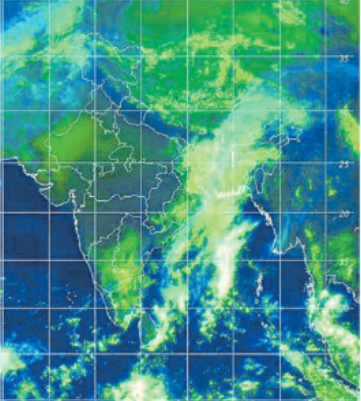

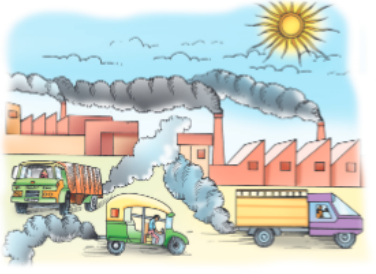
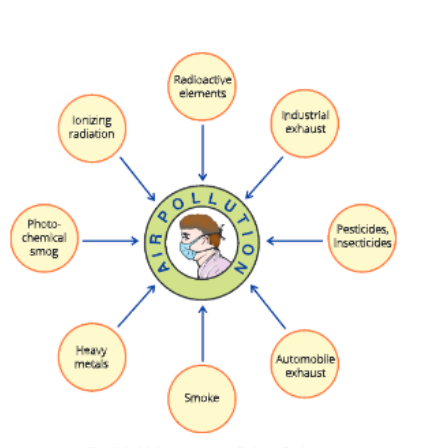
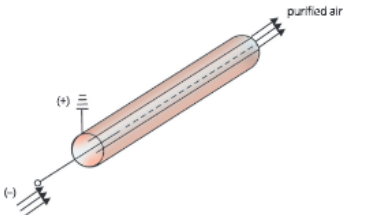
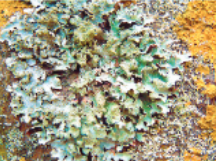

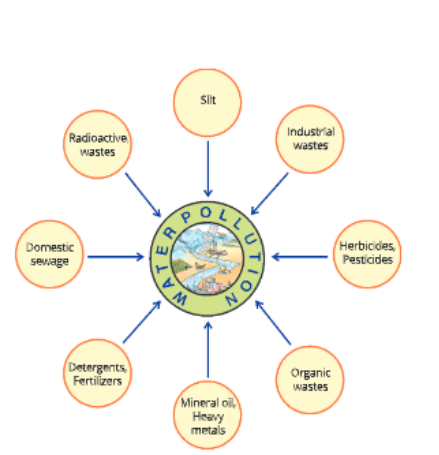

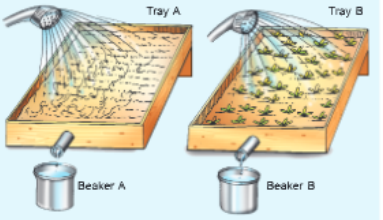
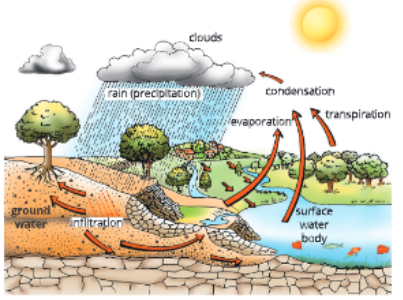
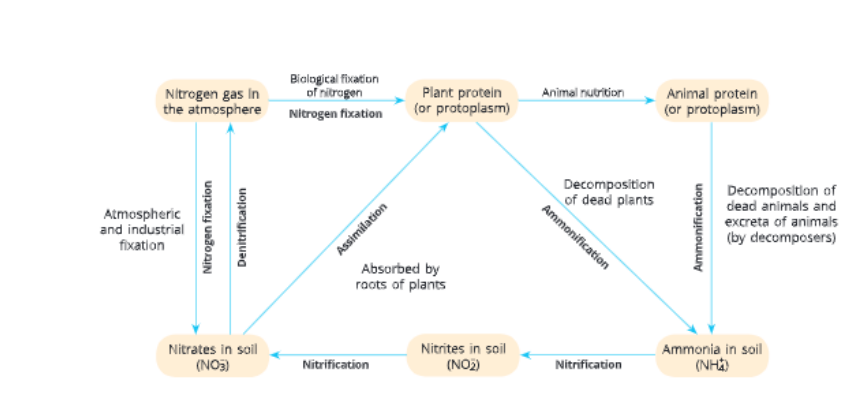
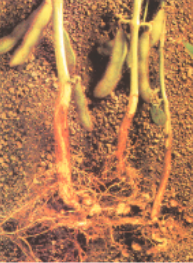
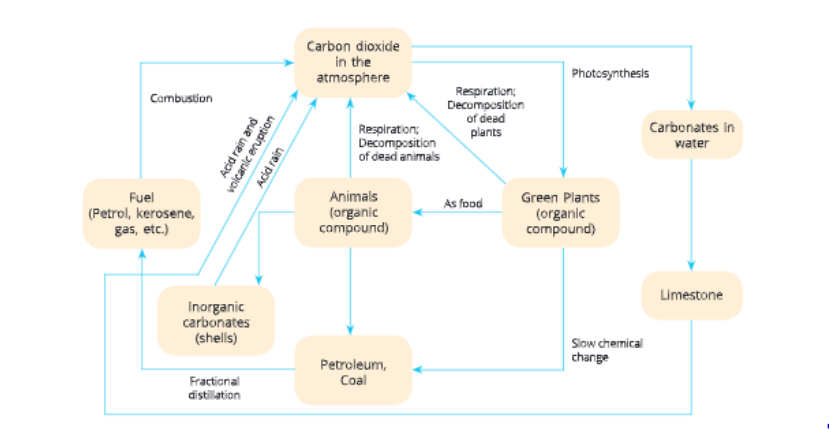
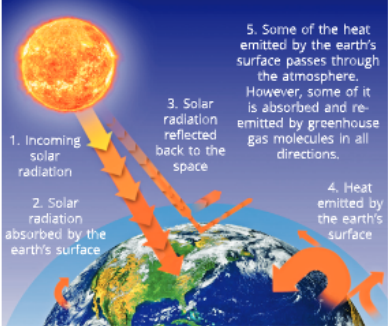
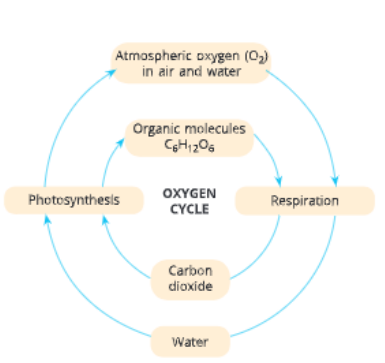

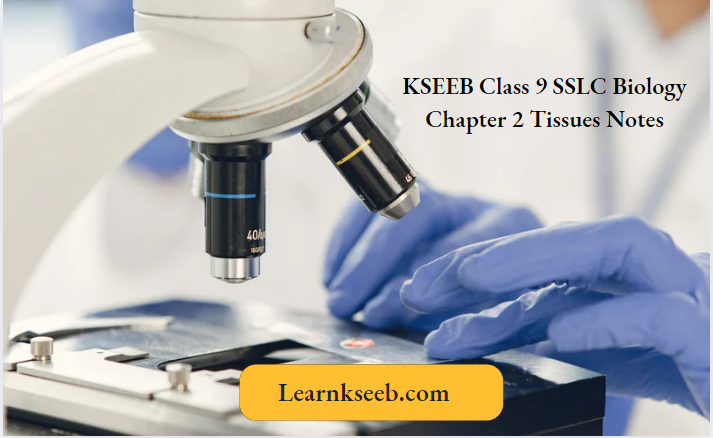
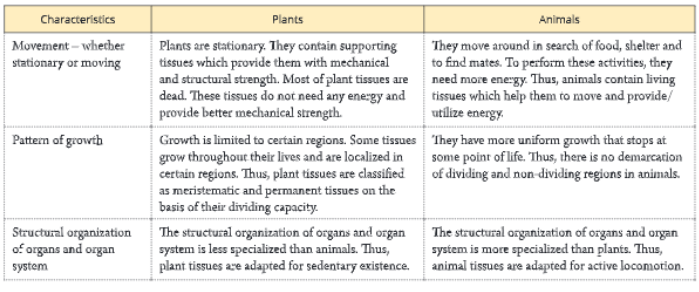
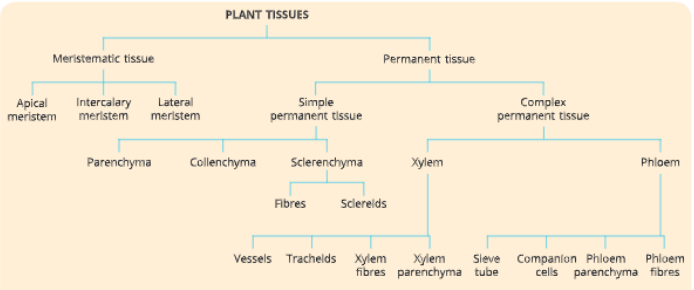
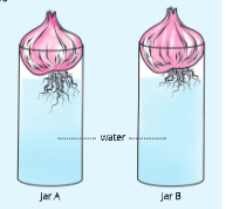
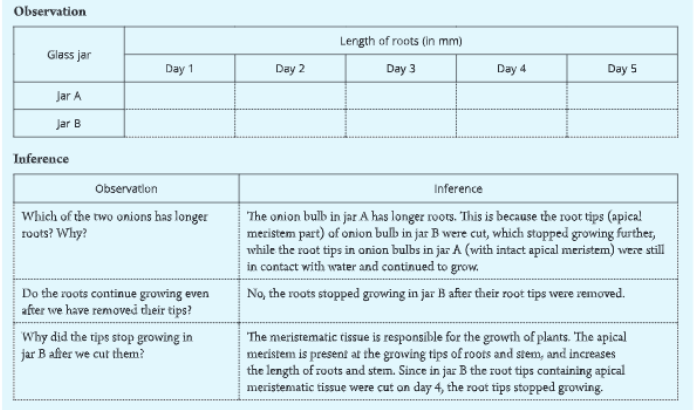

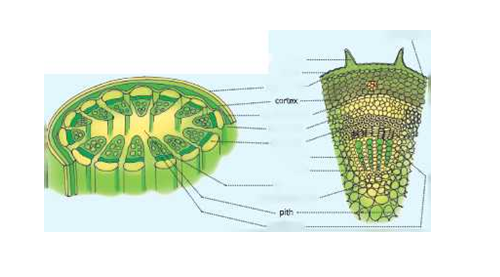 Observation
Observation Now, repeat the above activity by taking sections of a plant root or sections of a stem and roots of different plants.
Now, repeat the above activity by taking sections of a plant root or sections of a stem and roots of different plants.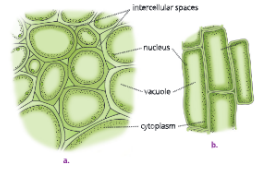 Their wall is made up of cellulose. The cells in these tissues are usually loosely packed. Thus, large intercellular spaces are present in between the parenchyma cells. Each parenchyma cell encloses a large central vacuole, cytoplasm and a prominent nucleus.
Their wall is made up of cellulose. The cells in these tissues are usually loosely packed. Thus, large intercellular spaces are present in between the parenchyma cells. Each parenchyma cell encloses a large central vacuole, cytoplasm and a prominent nucleus.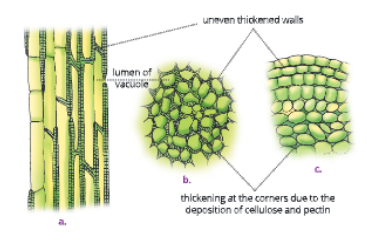
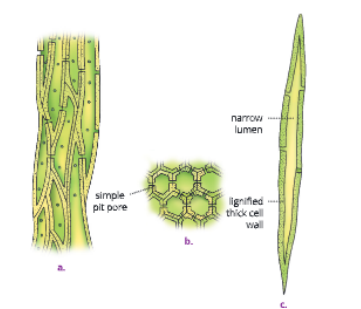
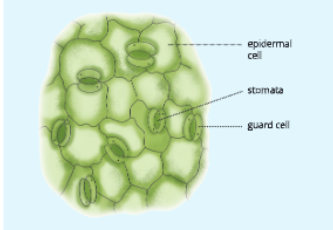


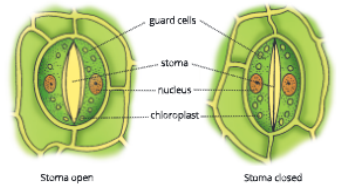

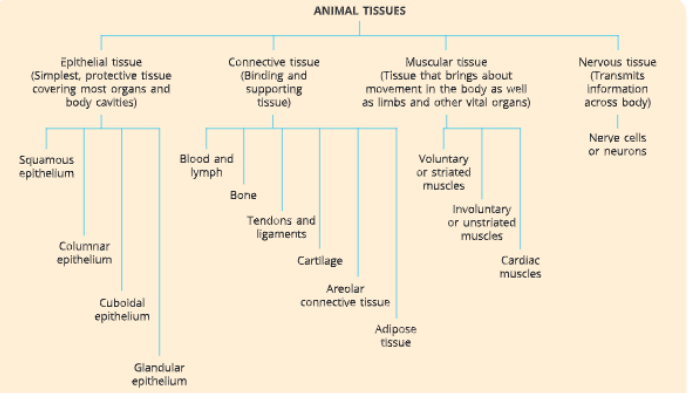
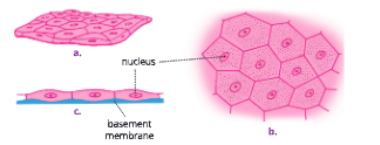
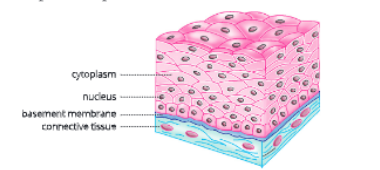

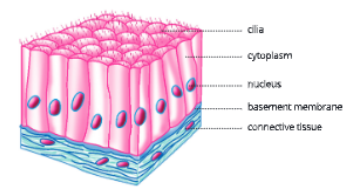

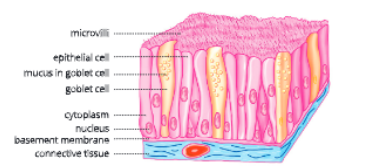
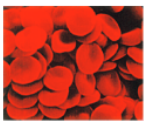 blood plasma. Plasma is a straw-coloured fluid which contains water, inorganic salts, organic substances like blood proteins and hormones. Red blood cells (RBCs), white blood cells (WBCs)
blood plasma. Plasma is a straw-coloured fluid which contains water, inorganic salts, organic substances like blood proteins and hormones. Red blood cells (RBCs), white blood cells (WBCs)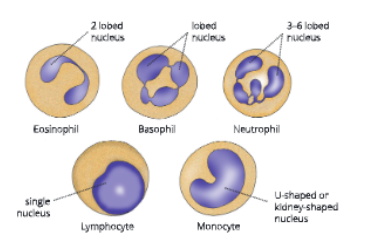
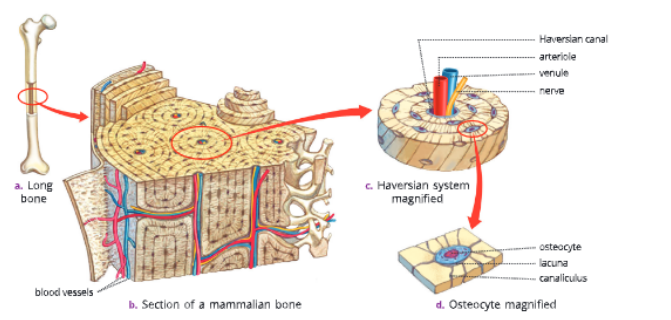
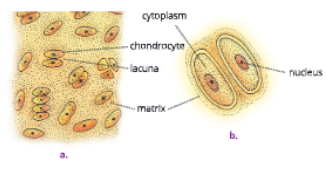
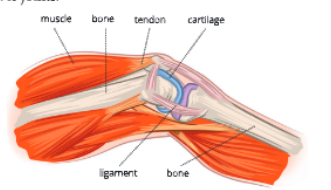


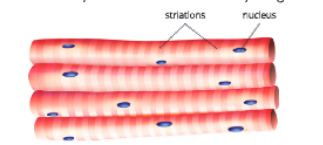
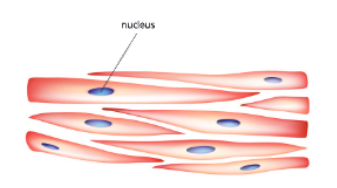
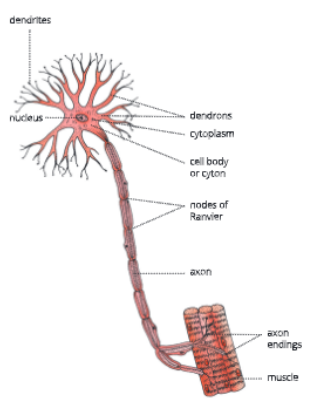
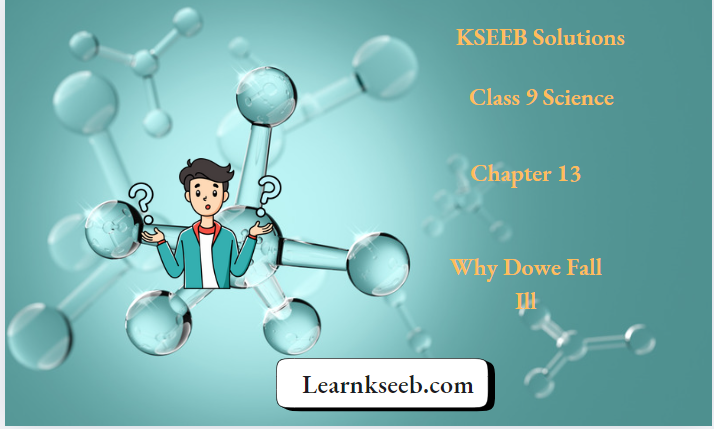
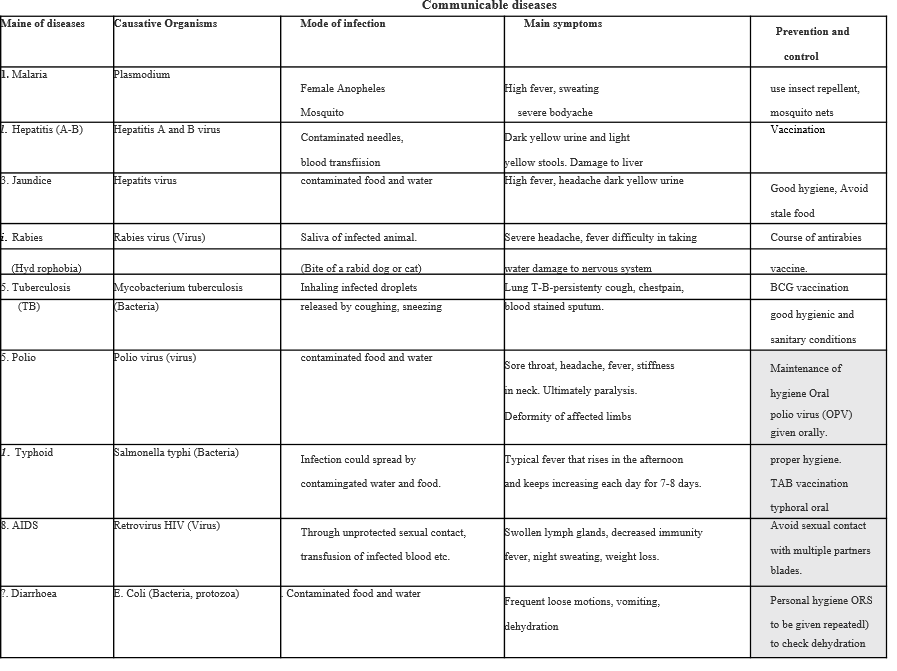
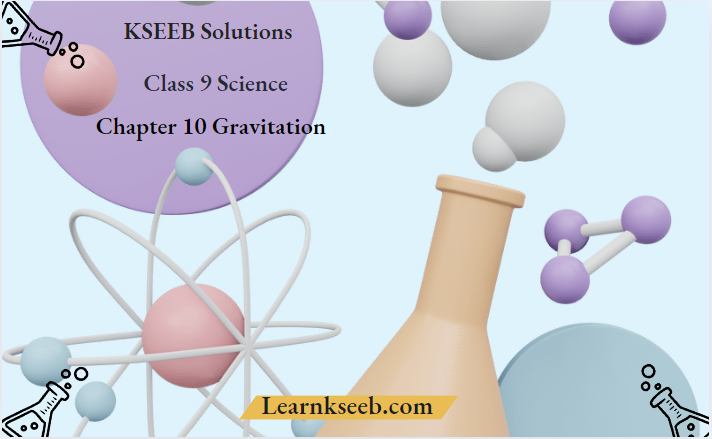
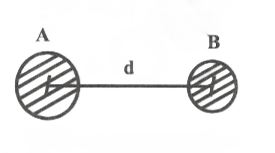
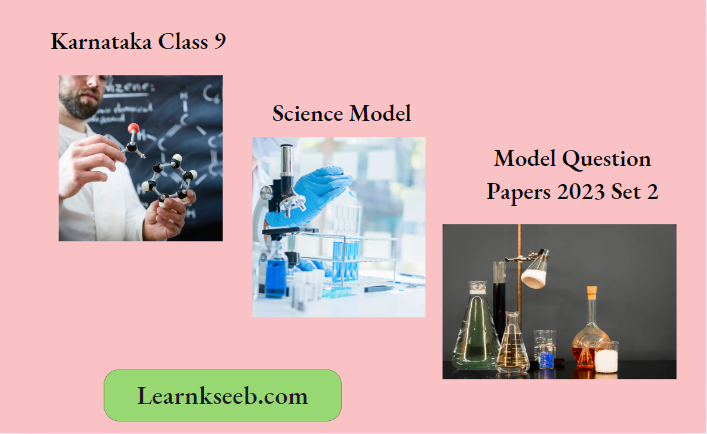

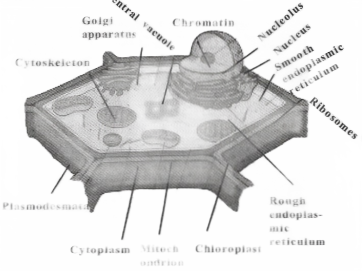
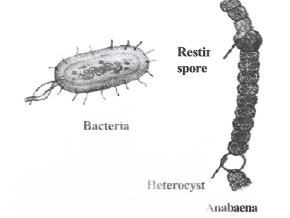

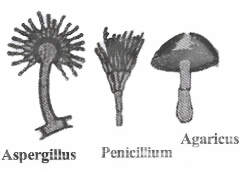
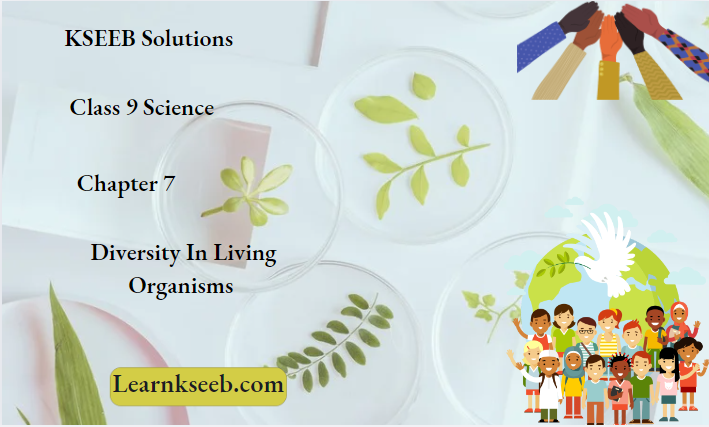


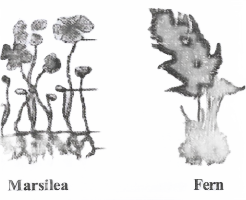

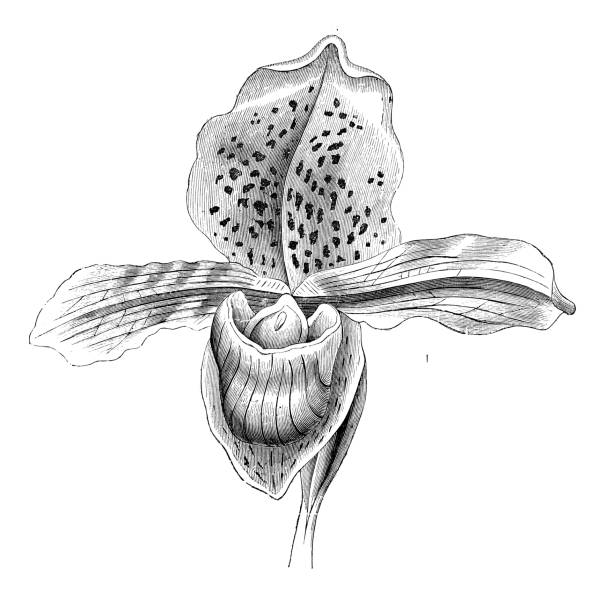
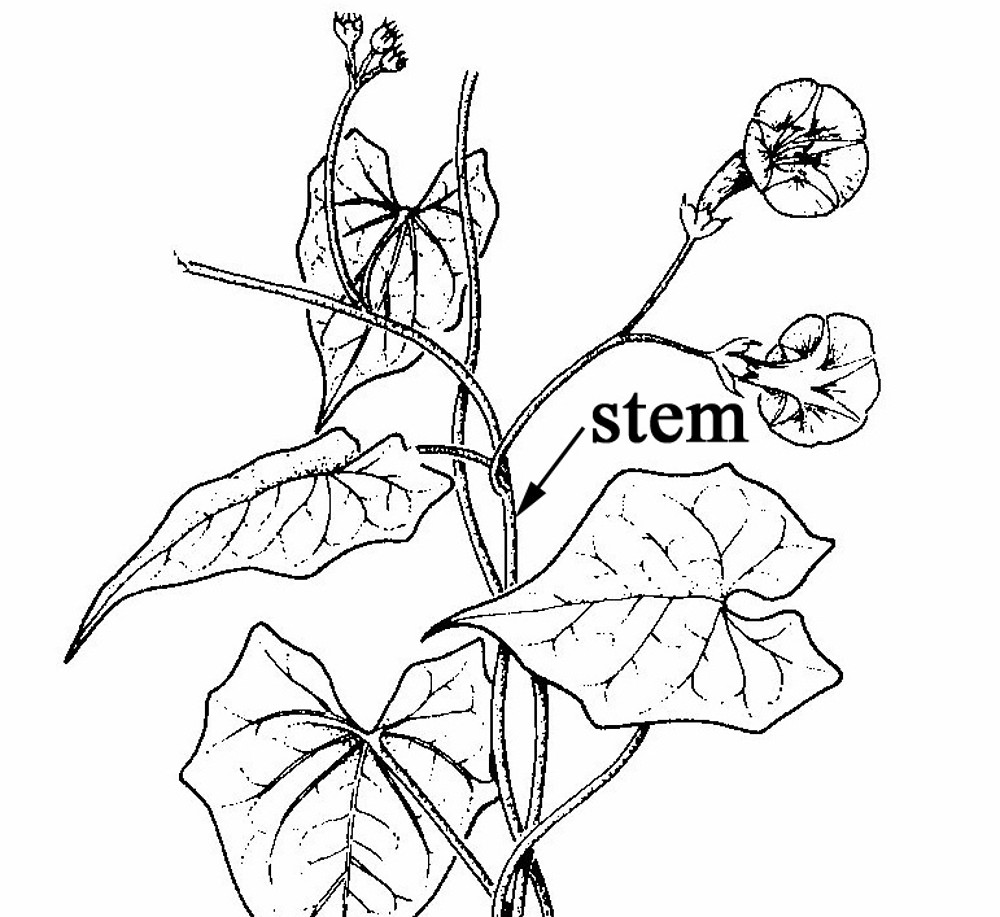
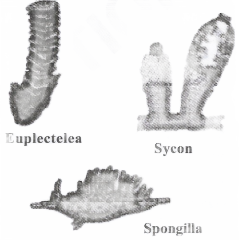
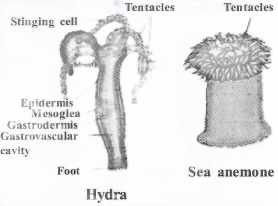
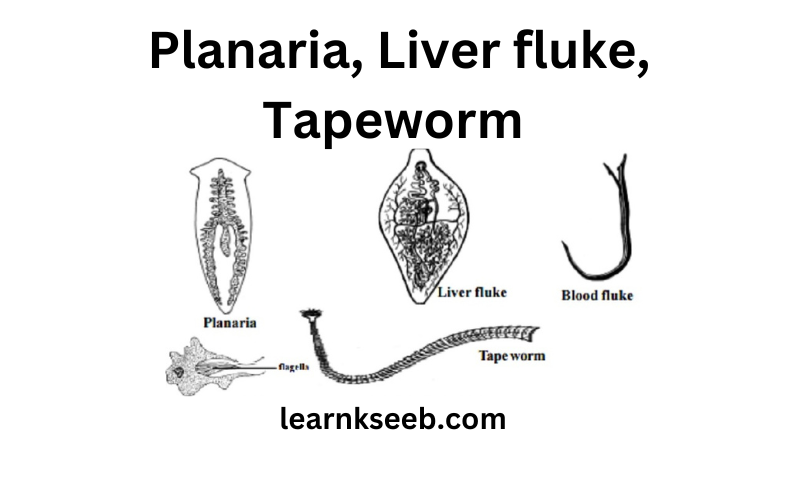
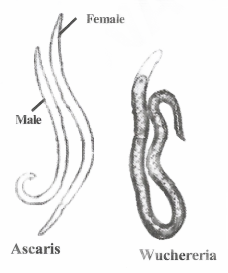
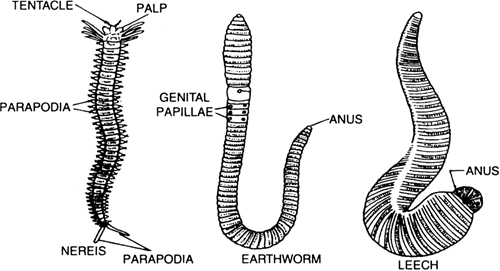
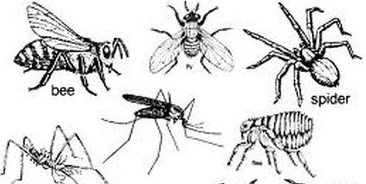
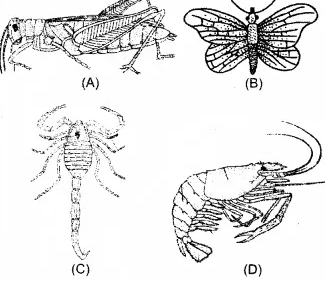
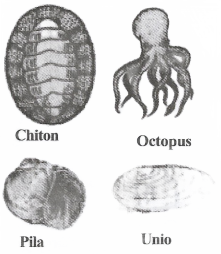
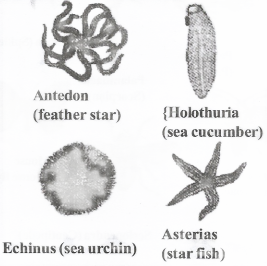
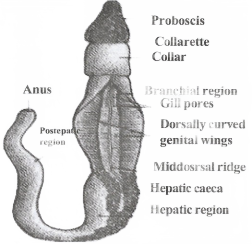
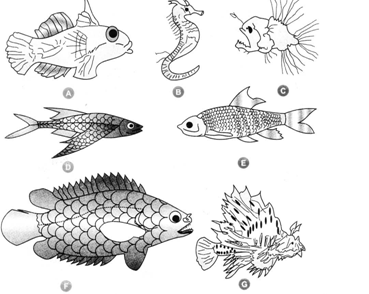
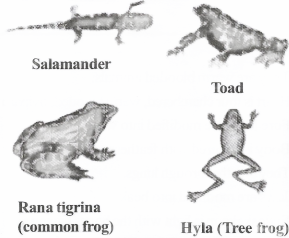

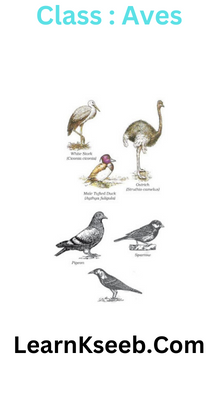 Class : Mammalia(mammals):
Class : Mammalia(mammals):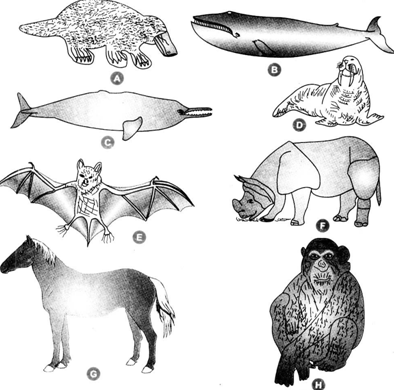
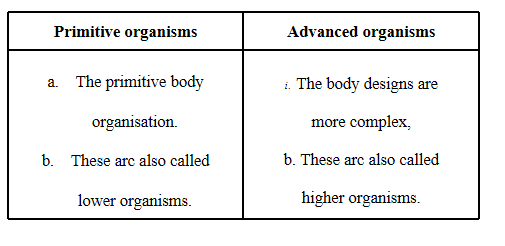
 Question 16. What are the differences between amphibians and reptiles?
Question 16. What are the differences between amphibians and reptiles?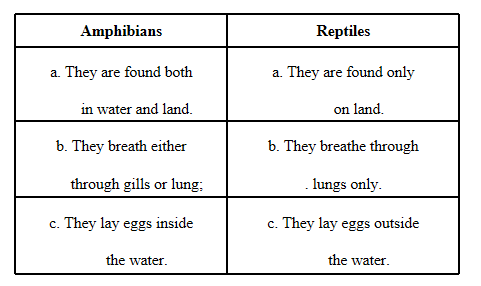 Question 17. What are the differences between animals belonging to the Aves group and those in the mammalian group?
Question 17. What are the differences between animals belonging to the Aves group and those in the mammalian group?
